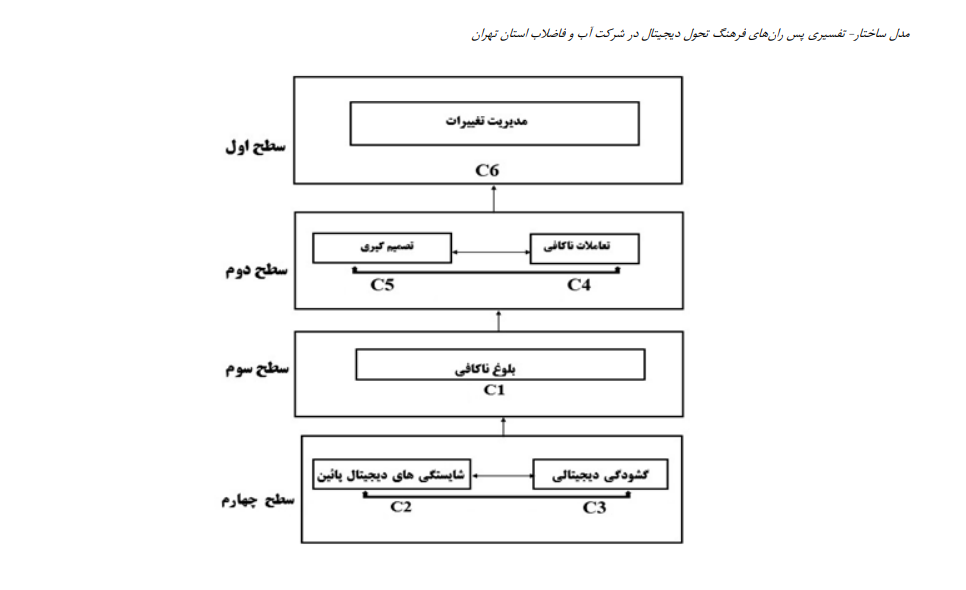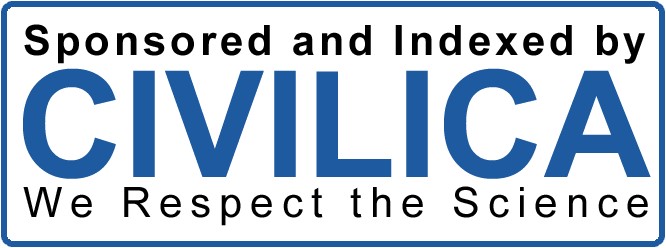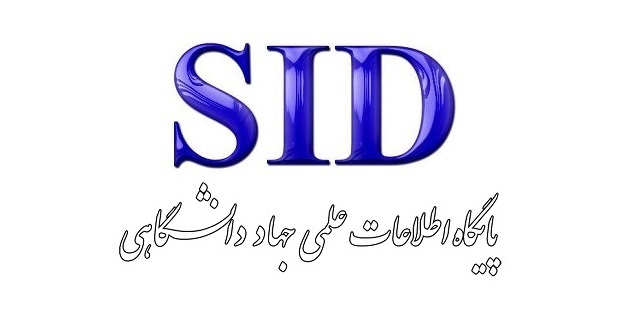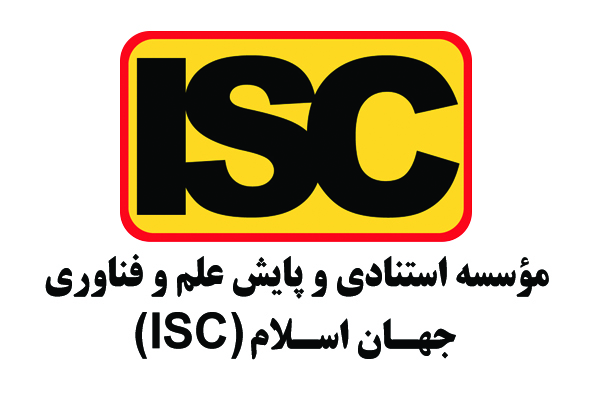طراحی مدل ساختاری - تفسیری (ISM) پس رانهای فرهنگ تحول دیجیتال با رویکرد زمینهای در شرکت آب و فاضلاب استان تهران
کلمات کلیدی:
فرهنگ تحول دیجیتال, پس رانها, مدل سازی ساختاری تفسیری, آب و فاضلاب استان تهرانچکیده
امروزه تحول دیجیتال به عنوان مبارزه مدرن برای زنده ماندن از تهدید اختلال دیجیتال توصیف میشود. دگردیسی دیجیتال فرآیندی است که طی آن یک سازمان با آزمون و خطا در استفاده از فناوریهای جدید و با تجدیدنظر در رویکردهای فعلی خود برای حل مشکلات و تغییر در روالهای کاری خود، تکامل پیدا میکند. برای تحقق فرهنگ تحول دیجیتال میبایست پس رانها، چالشها و موانع مرتبط با اختلال دیجیتال، ادغام فناوریهای نوظهور و دگرگونی محیطهای کاری سنتی را به دقت بررسی و مرتفع کرد، زیرا بدون غلبه بر آنها نمی توان تحول دیجیتالی موفقی داشت. هدف این پژوهش، طراحی مدل ساختاری-تفسیری پس رانهای فرهنگ تحول دیجیتال با رویکرد زمینهای در شرکت آب و فاضلاب استان تهران میباشد. پژوهش حاضر از نظر هدف کاربردی و از نظر روش یک تحقیق آمیخته اکتشافی است. در بخش کیفی از تحلیل تم و در بخش کمی از معادلات ساختاری - تفسیری استفاده شد. جامعه مورد بررسی در بخش کیفی شامل خبرگان به تعداد ۱۴ نفر تا رسیدن به نقطه اشباع داده به طور هدفمند انتخاب و در بخش کمی نمونهای به تعداد ۲۳۴ نفر از مدیران به شکل تصادفی ساده انتخاب گردید. برای جمعآوری دادهها در بخش کیفی از مصاحبه عمیق نیمهساختیافته و در بخش کمی از پرسشنامه محقق ساخته استفاده گردید. در مرحله کمی نیز برای تجزیهوتحلیل دادهها علاوه بر آمار توصیفی از تحلیل عاملی تأییدی و مدلسازی ساختاری - تفسیری با نظرات ۱۲ نفر خبره استفاده گردید. پس از شناسائی مضامین، مدل پس رانهای فرهنگ تحول دیجیتال تدوین و با استفاده از مدلسازی ساختاری - تفسیری(ISM) روابط بین عوامل تعیین و با استفاده از نمودار قدرت نفوذ - وابستگی (MICMAC) عوامل با توجه به اثرگذاری و اثرپذیری بر سایر عوامـل، مورد تحلیل قرار گرفت. نتـایج نشان میدهد که مولفههای شایستگیهای دیجیتالی پائین و گشودگی دیجیتالی با بیشترین قدرت نفوذ، پس ران و مانع اصلی اصـلی شـکل گیری فرهنگ تحول دیجیتال است. عوامل پیوندی شامل مؤلفههای تعاملات ناکافی و تصمیم گیری نیز با تعدد خود در این سیستم نقش بازدارنده و پس ران را ایفا میکنند. مؤلفه بلوغ ناکافی نیز در ناحیه خود مختار و مؤلفه مدیریت تغییرات در این سیستم تحت تأثیر سایر عوامل است. در نتیجه برای ایجاد و ارتقای فرهنگ تحول دیجیتال، مسـتلزم بازنگری، اصلاح یا حذف این موانع عمده میباشد. زیرا بدون غلبه بر آنها، نمی توان تحول دیجیتالی موفقی داشت.
دانلودها
مراجع
Babin, R., & Grant, K. A. (2019). How Do CIOs Become CEOs. Journal of Global Information Management, 27(4), 1-15. https://doi.org/10.4018/JGIM.2019100101
Ben-Zvi, T., & Luftman, J. (2022). Post-Pandemic IT: Digital Transformation and Sustainability. https://doi.org/10.3390/su142215275
Bendak, S., & Shikhli, A. M. (2020). How changing organizational culture can enhance innovation: Development of the innovative culture enhancement framework. https://doi.org/10.1080/23311975.2020.1712125
Blanco, J. L., Mullin, A., Pandya, K., & Sridhar, M. (2017). The new age of engineering and construction technology. The-new-age-of-engineering-and-construction-technology.pdf
Block, C. (2022). 12 Reasons Your Digital Transformation Will Fail. https://www.forbes.com/sites/forbeshumanresourcescouncil/2022/03/17/12-reasons-your-digital-transformation-will-fail
Bozkus, K. (2023). Organizational Culture Change and Technology: Navigating the Digital Transformation. https://doi.org/10.5772/intechopen.112903
Bughin, J., Hazan, E., Ramaswamy, S., Allas, T., Dahlstrom, P., Henke, N., & Trench, M. (2017). Impact of Advancement of Technology, Competitive Pressure, User Expectation on Continuous Digital Disruption: Mediating Role of Perceive Ease of Use. https://www.scirp.org/reference/referencespapers?referenceid=3043572
Buzinkay, M. (2023). 11 Digital Transformation Challenges and How to Overcome Them. https://www.identecsolutions.com/news/11-digital-transformation-challenges-and-how-to-overcome-them
Byrne, P. (2022). Digital transformation and modernization.
Cantemir, M., Pitic, A., & Bayraktar, D. (2024). Drivers of Digital Transformation and their Impact on Organizational Management. https://doi.org/10.2478/sbe-2023-0009
Chambers, J. (2019). 40% of Companies Will Be Dead in Ten Years - The Impact of Digital Transformation. https://www.hec.edu/en/executive-education/news/40-companies-will-be-dead-ten-years
Elham, A. A., Mohammadian, A., Ghateri, A. R., & Shoar, M. (2019). Presenting a Digital Transformation Capability Maturity Model Using the Meta-Synthesis Method: A Case Study of Pharmaceutical Companies. Quarterly Journal of Information Management. https://www.sid.ir/paper/381130/fa
Gao, J. (2024). Digital Transformation Path Design Research of Energy Enterprise Based on SPACE Analysis. https://doi.org/10.4108/eai.17-11-2023.2342725
Ghadousi, P. (2022). Organizational Change Management During Digital Transformation in the Construction Industry for Sustainable Urban Development. Scientific-Research Quarterly Journal of Geography and Regional Planning. https://www.jgeoqeshm.ir/article_164440.html
Hajieh, R. F., Davoud, S., & Mehri, K. (2022). Identifying and Ranking the Factors Affecting the Implementation of Digital Transformation in Technology-Oriented Organizations. Scientific Journal of "Technology, Studies, and Law Enforcement Communications". https://civilica.com/doc/1709220
Hao, J., Ren, X., Bi, H., & Wu, J. G. (2025). How does digital transformation predict the investment cycle in family enterprises? Technological Forecasting and Social Change, 210, 123895. https://doi.org/10.1016/j.techfore.2024.123895
Kankanam Gamage, A. N. K. (2021). Study of Challenges in Implementing Digital Transformation in Construction Projects. https://ijpsat.org/index.php/ijpsat/article/view/3912
Kaplan, A., & Haenlein, M. (2019). Digital transformation and disruption: On big data, blockchain, artificial intelligence, and other things. https://doi.org/10.1016/j.bushor.2019.07.001
Koeleman, J., Ribeirinho, M. J., Rockhill, D., Sjödin, E., & Strube, G. (2019). Decoding digital transformation in construction. https://www.mckinsey.com/capabilities/operations/our-insights/decoding-digital-transformation-in-construction
Koscheyev, V., Rapgof, V., & Vinogradova, V. (2019). Digital transformation of construction organizations. https://doi.org/10.1088/1757-899X/497/1/012010
Koseoglu, O., Keskin, B., & Ozorhon, B. (2019). Challenges and enablers in BIM-enabled digital transformation in mega projects: The Istanbul new airport project case study. https://doi.org/10.3390/buildings9050115
Krimpizi, T. G., Peristeras, V., & Magnisalis, I. (2023). Classification of Barriers to Digital Transformation in Higher Education Institutions: Systematic Literature Review. https://doi.org/10.3390/educsci13070746
Lee, H., & Lee, S. (2020). Creative industry digital transformation case study, market reorganization strategy and platform. https://doi.org/10.14400/JDC.2020.18.7.177
Lee, S., & Lee, D. (2021). Opportunities and challenges for contactless healthcare services in the post-COVID-19 Era. https://doi.org/10.1016/j.techfore.2021.120712
Malik, M. (2024). Digital Leadership, Business Model Innovation and Organizational Change: Role of Leader in Steering Digital Transformation. Benchmarking an International Journal. https://doi.org/10.1108/bij-04-2023-0283
Müller, S. D., Obwegeser, N., Glud, J. V., & Johildarson, G. (2019). Digital Innovation and Organizational Culture: The Case of a Danish Media Company. https://aisel.aisnet.org/sjis/vol31/iss2/1
Nasih, M. Z. (2024). Digital Transformation: The Effect of Learning Management Systems in Developing Employee Digital Competence. Jurnal Ekonomi Bisnis & Entrepreneurship, 18(2), 604-613. https://doi.org/10.55208/z4bv1w35
Noori, M., Shah Hosseini, M. A., Zanjani, M. S., & Abedin, B. (2019). Designing a Conceptual Framework for Digital Transformation Leadership in Iranian Organizations. Management and Planning in Educational Systems. https://mpes.sbu.ac.ir/article_98486_3249bcfce893a7e39b6eee2f0d9d9105.pdf
Parusheva, S. (2019). Digitalization and Digital Transformation in Construction-Benefits and Challenges. In. https://www.researchgate.net/publication/336699474_Digitalization_and_Digital_Transformation_in_Construction_-_Benefits_and_Challenges
Pradana, M., Silvianita, A., Syarifuddin, S., & Renaldi, R. (2022). The Implication of Digital Organisational Culture on Firm Performance. https://doi.org/10.3389/fpsyg.2022.840699
Raj, A., Dwivedi, G., Sharma, A., Jabbour, A. B. L. d. S., & Rajak, S. (2020). Barriers to the adoption of industry 4.0 technologies in the manufacturing sector: An inter-country comparative perspective. https://doi.org/10.1016/j.ijpe.2019.107546
Saatcioglu, O. (2019). Scrutinizing the Barriers That Impede Industry 4.0 Projects: A Country-Wide Analysis for Turkey. In. https://doi.org/10.4018/978-1-5225-7865-9.ch016
Serpa, S., Sá, M. J., & Ferreira, C. M. (2022). Digital Organizational Culture: Contributions to a Definition and Future Challenges. https://doi.org/10.36941/ajis-2022-0095
Shahi, C., & Sinha, M. (2020). Digital transformation: challenges faced by organizations and their potential solutions. https://doi.org/10.1108/IJIS-09-2020-0157
Shirazi, M., Yazdani, H., & Matin, H. Z. (2021). Providing a Roadmap for Implementing the Required Organizational Culture for Digital Transformation Using a Meta-Synthesis Approach.
Soleimani, Z. (2021). Examining Culture Development as the Main Challenge of Digital Transformation.
Trushkina, N., Abazov, R., & Rynkevych, N. (2020). Digital Transformation of Organizational Culture under Conditions of the Information Economy. https://doi.org/10.34021/ve.2020.03.01(1)
Verlinden, N. (2023). HR Digital Transformation: An HR Leader's Guide. https://www.aihr.com/blog/hr-digital-transformation/
Wolf, M., Semm, A., & Erfurth, C. (2018). Digital transformation in companies - challenges and success factors. In. https://doi.org/10.1007/978-3-319-93408-2_13
Zanjani, M. S. (2021). Digital Transformation in the Insurance Industry: What and Why. Digitigi Publishing Center, Tehran, Iran. Digital Transformation in the Insurance Industry - Dr. Mehdi Shami Zanjani's Website
Zanjani, M. S., Nabooti, A., Nasab, H. S. M., & Doost, I. S. (2020). Examining the Status of Digital Culture in the Banking Industry. Report - Examining the Status of Digital Culture in the Banking Industry.pdf

دانلود
چاپ شده
ارسال
بازنگری
پذیرش
شماره
نوع مقاله
مجوز
حق نشر 2025 تکنولوژی در کارآفرینی و مدیریت استراتژیک

این پروژه تحت مجوز بین المللی Creative Commons Attribution-NonCommercial 4.0 می باشد.










